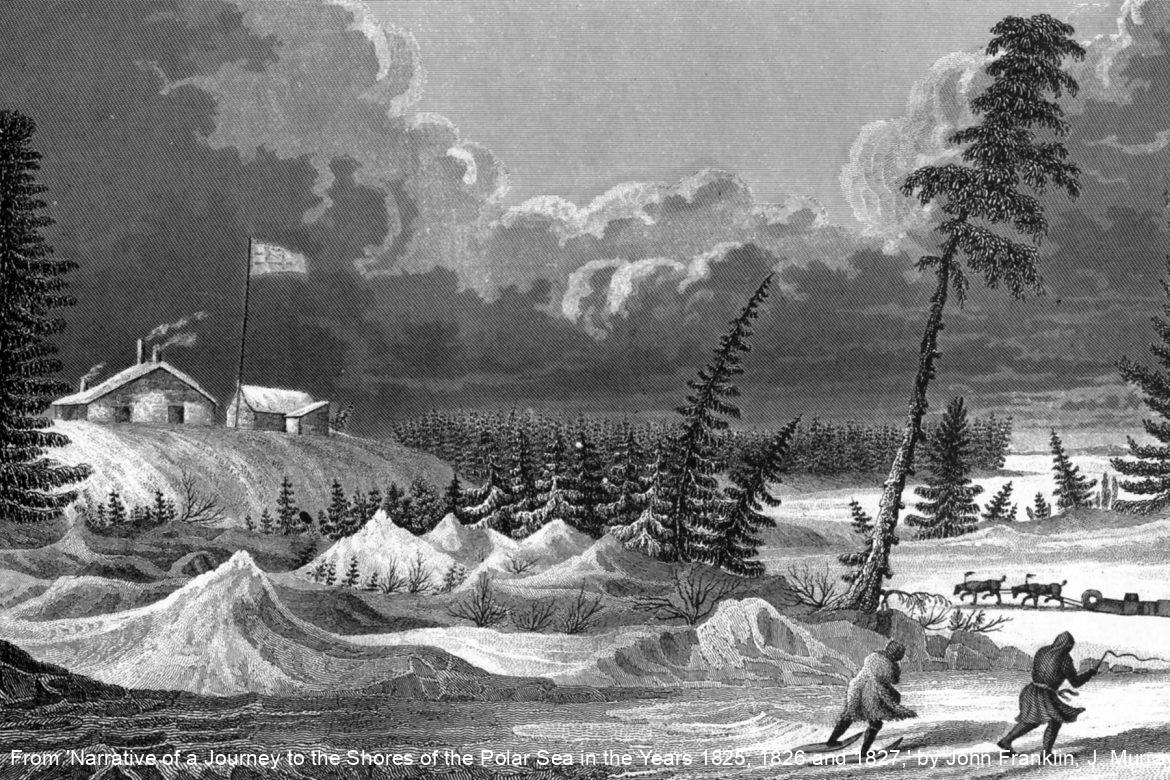1800-1849
A Time of Change
The 1800s were a time of significant change in the NWT. There was an intense rivalry between the Hudson’s Bay Company and the North-West Company. This rivalry spurred the construction of many trading posts. In 1821 these companies merged and became a monopoly, continuing under the name Hudson’s Bay Company. Many of these posts became the communities we see today in the Northwest Territories.
This period was difficult for the Dene as they incorporated trapping for trade into their subsistence way of life on the land. However, many Dene refused to participate. They saw the traditional lifestyle as superior to dependence on the Hudson’s Bay Company, its trading posts and foreign business demands. For others, trapping became a way of living on the land and participating in the settlers’ cash economy.
Within the various Dene nations, some men took on essential roles of negotiators between their people and the fur traders, with the support of the Hudson’s Bay Company. These men became powerful ’trading chiefs,’ whose names are still known today. This system of ‘trading chiefs’ began to alter the traditional leadership systems. Certain trade items, notably fabrics and metal, were valued, making life easier. Women also participated in the trade economy and were translators and diplomats.
By the middle of the 1800s, trapping furs to sell to the newcomers had become the way of life for most Dene of the Northwest Territories. In 1840, due to the establishment of Peel River House (later Fort McPherson), near the southern edge of the Mackenzie Delta, the Inuvialuit of the Arctic coast began to trap and trade their furs for manufactured goods as well.
This dramatic expansion of the fur trade also increased knowledge of the geography of the Northwest Territories among non-Indigenous people. Exploration was generally to find what resources would benefit their country of origin.
